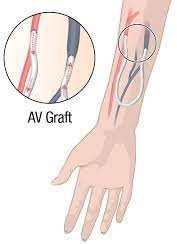What is the priority action the nurse will take for a 4-year old client admitted with minimal change nephrotic syndrome (MCNS) who has hypertension and facial edema?
Monitor the client's fluid volume and hydration status.
Teaching the client's parents about and preparing for a renal biopsy.
Consulting with a registered dietician about adequate intake.
Use only sterile techniques to prevent infections.
The Correct Answer is A
In a client with minimal change nephrotic syndrome (MCNS), the primary concern is the management of fluid volume and hydration status. MCNS is characterized by increased glomerular permeability, leading to excessive protein loss in the urine and subsequent hypoalbuminemia. This can result in fluid retention and edema formation, including facial edema.
Hypertension is a common complication in clients with MCNS, and it further contributes to fluid retention and potential complications. Therefore, closely monitoring the client's fluid volume and hydration status, including daily weights, intake and output measurements, and assessment of edema, is crucial to detect any changes and guide appropriate interventions.
While other actions, such as consulting with a registered dietitian about adequate intake or using sterile technique to prevent infections, may be important aspects of the client's care, they are not the priority in this situation. The immediate concern is managing the client's hypertension and fluid volume status to prevent complications associated with MCNS.
Nursing Test Bank
Naxlex Comprehensive Predictor Exams
Related Questions
Correct Answer is D
Explanation
Pain and coldness in the fingers following AVG placement can indicate impaired blood flow or compromised circulation to the hand. This may be due to complications such as thrombosis (clot formation), graft malfunction, or decreased arterial perfusion. These symptoms should be taken seriously and promptly communicated to the healthcare provider.
The healthcare provider needs to evaluate the patient's symptoms, assess the AVG, and determine the appropriate course of action. Prompt intervention can help prevent further complications and ensure adequate blood flow to the fingers.

Correct Answer is C
Explanation
The assessment findings indicate that the client has diminished lung sounds in the lower lobes, suggesting potential postoperative atelectasis or decreased air movement in the lungs. Using an incentive spirometer can help improve lung expansion and prevent respiratory complications such as pneumonia. It is important to address this issue promptly to prevent further deterioration of lung function.
Administering pain medication may be necessary depending on the client's level of pain, but addressing the respiratory issue takes priority in this situation.
Administering the antibiotic earlier than scheduled or changing the dressing over the wound may not be indicated based on the provided assessment findings.
Therefore, having the client use the incentive spirometer is the most appropriate action at this time to promote optimal lung function and prevent respiratory complications.
Whether you are a student looking to ace your exams or a practicing nurse seeking to enhance your expertise , our nursing education contents will empower you with the confidence and competence to make a difference in the lives of patients and become a respected leader in the healthcare field.
Visit Naxlex, invest in your future and unlock endless possibilities with our unparalleled nursing education contents today
Report Wrong Answer on the Current Question
Do you disagree with the answer? If yes, what is your expected answer? Explain.
Kindly be descriptive with the issue you are facing.
